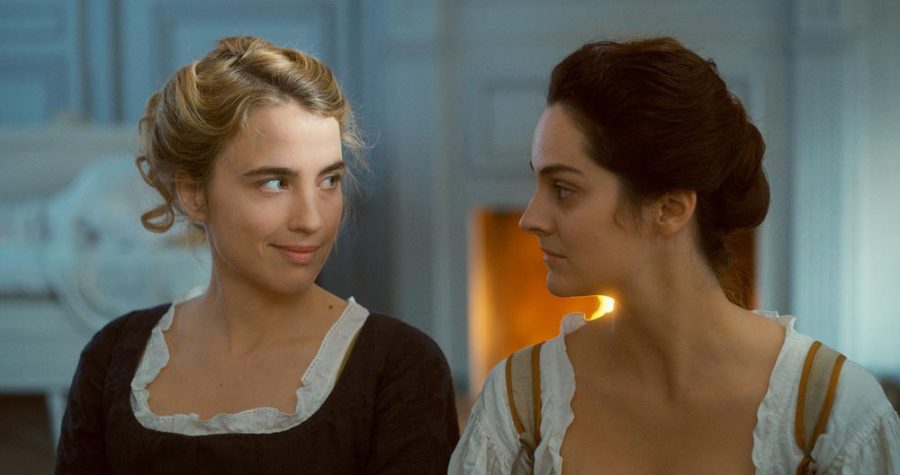Of the vast amount of lesbian dramas that have emerged from the last decade, most have been the product of a male director, containing graphic sex scenes that don’t necessarily contribute to the plot, like Abdellatif Kechiche’s “Blue is the Warmest Colour,” for example. Others, however, are carefully done and show the real compassion that can exist between two women, like Todd Haynes’ “Carol.”
What Director Céline Sciamma does with ‘Portrait of a Lady on Fire’ is take her experience as a lesbian woman and turn it into something that is vulnerable, romantic and full of compassion. The film gives hope to a new decade of beautiful LGBTQ storytelling.
“Portrait of a Lady on Fire” takes place in late eighteenth century France, where a young painter, Marianne (Noémie Merlant), is hired to paint a portrait of another young woman, HéloΪse (Adéle Haenel), who is soon to be married. While the two women soon become companions on a mostly remote island, the tensions of their romance are slowly built up through the uncertainties each has about their newfound love.
From start to finish, “Portrait of a Lady on Fire” is alive with beautiful film locations and scenery that feel as important as the actual characters. The use of this scenery to tell a story makes it so that the audience feels the emotion between Marianne and HéloΪse without them having to say a single word.
One of the most beautiful and revealing scenes in the film is one that contains no dialogue, but focuses on the two women staring at each other from across a fire. We see them hold their gaze through a roaring fire, as it grows and becomes full of tension. This scene alone illustrates in a non-verbal manner the first glimpses of love between two people.
While the score is minimal, there’s an interesting usage of diegetic sound in a few scenes that are particularly emotional. Again in the same bonfire scene, Marianne and HéloΪse are surrounded by women dancing and singing a folk song. As the women sing, more join in and eventually create a cacophony of voices which is intense and also seem to narrate the unspoken feelings within the moment. The gradual intensity of the singing mixed with a roaring fire and the fixed gaze of the two main characters creates tension that can be felt through the screen.
Another great use of sound is during the last scene where the women see each other for the first time since their encounter while living on that island together. At an opera, Marianne sees HéloΪse, and while playing Vivaldi’s “Summer,” the camera is focused on HéloΪse’s face, as she becomes overwhelmed with emotion, and the memory of the only real love of her life.
Of course the main actors, Merlant and Haenel, do an amazing job of guiding the film through its intimate style. The two are able to show, sometimes without telling, the complicated manner of a first time same-sex love. While they are restrained from making their feelings vocal for most of the film, they have to work nonverbally; and this is another aspect of the film that creates such strong chemistry between them. A simple look, or small physical touch that would usually go unnoticed is amplified by the actors, making even the smallest gestures seem bold.
Where credit is due for Director Sciamma, is the pure care and love of this film that can be seen through her storytelling. While being publically out as a lesbian filmmaker, she stands as one of the few directors of a female romance who understands the layers of woman-loving-woman relationships.
“Portrait of a Lady on Fire” feels romantic, gentle and sensual where it needs to be and above all is a refreshing perspective of lesbian romance.
Rating: 5/5 stars
Danielle Kessler can be reached at orionmanagingeditor@gmail.com or @reserv0irpups on Twitter.








Lydia // Feb 21, 2021 at 1:32 am
I want to become a lesbian
Wolfman // Apr 6, 2020 at 12:42 pm
Really first rate writing by this Orion movie reviewer. Credit the writer for going out and finding a film that’s not getting a lot of attention – a film that’s not a big commercial release – but one that deserves our attention.